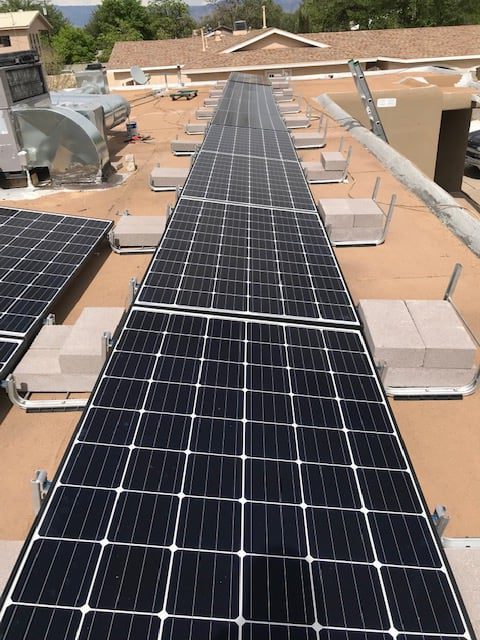Here’s How Solar Power Produces Electricty for Homes and Businesses


Solar power is a way of converting the sun’s energy into useful forms of power, like electricity and heat. This can be done using solar panels on both residential rooftops and large tracts of rural land.
Is solar power a clean energy source?
Solar power is a renewable and infinite energy source – if the sun continues to shine, energy will be released.
Solar panels have a very small carbon footprint which will continue to shrink as more recycled materials are used in their construction.
Solar power, as opposed to burning fossil fuels, is a clean and sustainable energy source that doesn’t produce harmful greenhouse gas emissions.
When was solar power discovered?
Solar energy has been used by humans as early as the 7th century B.C. when they started using sunlight to light fires by reflecting the sun’s rays onto shiny objects. Later, in 3rd century BC, Greeks and Romans harnessed solar power with mirrors to light torches for religious ceremonies.
Edmond Becquerel discovered the photovoltaic effect while experimenting with a cell made of metal electrodes in a conducting solution. He found that when light hit the cell, it produced more electricity – this was due to the photovoltaic effect. This happened in 1839, when Becquerel was only 19 years old.
In 1954, Daryl Chapin, Calvin Fuller and Gerald Pearson developed the silicon PV cell at Bell Labs. This was the first solar cell capable of absorbing and converting enough of the sun’s energy into power to run every day electrical equipment.
Today, spacecraft orbiting Earth and satellites are powered by solar energy.
How exactly is electricity from solar energy produced?
Solar panels are usually made from silicon, which is a material that can create electricity when light hits it. They are usually housed in a metal panel frame. The photons (particles of light) knock electrons off the atoms of silicon, and this creates an electric current.
This PV charge creates an electric current that is captured by the wiring in solar panels. This DC electricity is then converted to AC current by an inverter, which is the type of electrical current used when you plug appliances into normal wall sockets.
Solar PV and solar thermal are two methods of harvesting solar energy. Solar PV is a more recent technology that uses the photovoltaic effect to generate electricity, while solar thermal harvests heat directly from the sun to be used for various purposes such as water heating or power generation.
Solar PV is more efficient at generating electricity than solar thermal, but solar thermal can be used to directly heat fluids which makes it useful for certain applications. Solar thermal can also be used – on a larger scale – in power stations.
What are solar farms?
Solar farms, also known as solar parks or solar fields, are large areas of land containing interconnected solar panels positioned together over many acres, to harvest large amounts of solar energy at the same time.
Solar farms are designed for large-scale solar energy generation that feed directly into the grid, as opposed to individual solar panels that usually power a single home or building.
Can solar power be generated on a cloudy day?
Yes, it can. Solar power is a great option for generating electricity, as it only requires some level of daylight to harness the sun’s energy. However, the rate at which solar panels generate electricity does vary depending on things like the amount of direct sunlight and panel quality.
How much solar power does the US currently generate?
Surprisingly, the US is the second-largest producer worldwide of solar power, behind China. Following the US, Japan comes next, followed by Germany, India, Italy, and the UK.
The United States has a combined installed photovoltaic and concentrated solar power capacity of 121,475 megawatts as of the end of 2021.
In 2018, utility-scale solar power generated 66.6 terawatt-hours (TWh), accounting for 1.66% of total U.S. electricity generation that year.
The current peak solar electricity generation record in the United States was set on April 20, 2020, when solar power plants generated 9680 megawatts of electricity – enough to boil five million kettles!
The key is to continue working to increase the use of renewable energy while keeping costs down for customers. This can be achieved by overcoming two interconnected challenges: making sure that there is enough demand for power generated and updating the foundations of the electricity system.
Historically, electricity has relied on fossil fuels, but they are designing new approaches and incorporating new technologies.
